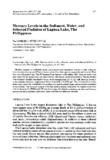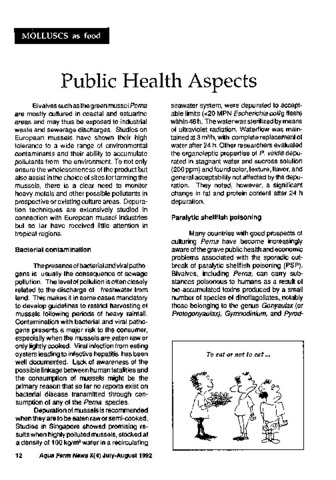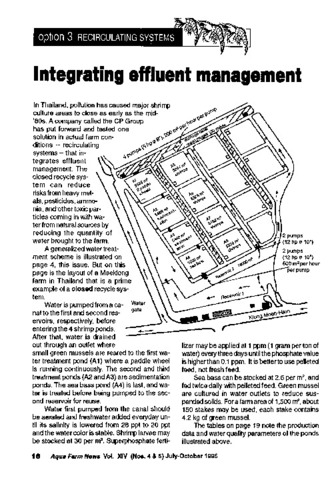Effect of detention time on aerobic waste stabilization pond performance in Southeast Asia
Share
| dc.contributor.author | Millamena, Oseni M. | |
| dc.date.accessioned | 2013-02-21T03:35:01Z | |
| dc.date.available | 2013-02-21T03:35:01Z | |
| dc.date.issued | 1994 | |
| dc.identifier.citation | Millamena, O. M. (1994). Effect of detention time on aerobic waste stabilization pond performance in Southeast Asia. Bulletin of Environmental Contamination and Toxicology, 52(6), 856–863. | en |
| dc.identifier.issn | 0007-4861 | |
| dc.identifier.uri | http://hdl.handle.net/10862/1459 | |
| dc.description.abstract | The rising level of pollution in rivers, lakes and other bodies of water has created problems of significant magnitude in Southeast Asia. Apart from the aesthetic desirability of clean rivers are the pressing dangers to health and detrimental effects on aquatic life. Pollution of these sources must be controlled so as not to interfere with the waters' legitimate uses. Waste stabilization ponds are well-accepted as an effective and economical means of waste disposal. A "stabilization pond" is an artificially created body of water intended to retain sewage or organic wastes until biological processes have rendered the wastes stable. The stabilization process consists of bacteria and algae interaction. Bacteria oxidize the wastes and produce sludge, carbon dioxide and ammonia. The nutrients produced from bacterial oxidation, along with light energy, supply the requirements for algal photosynthesis. Algae produce oxygen needed to sustain the treatment process. Optimum detention time refers to the average length of time required for waste to become stabilized within a pond. Properly designed and operated, a stabilization pond can provide treatment comparable to a more costly waste treatment plant. However, the design criteria for a particular climate may not be applicable to other climates. This study was conducted to establish suitable detention times for aerobic stabilization ponds in Southeast Asia. | en |
| dc.language.iso | en | en |
| dc.publisher | Springer Verlag | en |
| dc.subject | South East Asia | en |
| dc.title | Effect of detention time on aerobic waste stabilization pond performance in Southeast Asia | en |
| dc.type | Article | en |
| dc.citation.volume | 52 | |
| dc.citation.issue | 6 | |
| dc.citation.spage | 856 | |
| dc.citation.epage | 863 | |
| dc.citation.journalTitle | Bulletin of Environmental Contamination and Toxicology | en |
| dc.subject.asfa | oxic conditions | en |
| dc.subject.asfa | Algae | en |
| dc.subject.asfa | Bacteria | en |
| dc.subject.asfa | biodegradation | en |
| dc.subject.asfa | biotechnology | en |
| dc.subject.asfa | economics | en |
| dc.subject.asfa | freshwater pollution | en |
| dc.subject.asfa | lagoons | en |
| dc.subject.asfa | pollution control | en |
| dc.subject.asfa | waste disposal | en |
| dc.subject.asfa | wastewater treatment | en |
| dc.subject.asfa | water pollution | en |
| dc.identifier.doi | 10.1007/BF00200694 |
Files in this item
| Files | Size | Format | View |
|---|
This item appears in the following Collection(s)
-
AQD Journal Articles [1214]
These papers were contributed by AQD staff to various national and international journals



